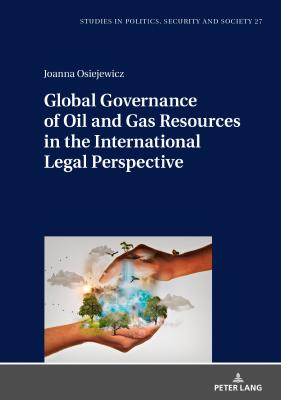ТОП просматриваемых книг сайта:















Global Governance of Oil and Gas Resources in the International Legal Perspective. Joanna Osiejewicz
Читать онлайн.Название Global Governance of Oil and Gas Resources in the International Legal Perspective
Год выпуска 0
isbn 9783631815861
Автор произведения Joanna Osiejewicz
Жанр Юриспруденция, право
Серия Studies in Politics, Security and Society
Издательство Ingram
The principle of permanent sovereignty over natural resources is also associated with the increased attention to the rights of indigenous peoples, in particular with regard to their native lands and natural resources. Regulations establishing the rights of indigenous peoples and setting standards for the protection of these rights57 are included in the United Nations General Assembly Declaration on the Rights of Indigenous Peoples,58 and in the International Labour Organization Convention No. 169 on indigenous and tribal peoples (1989),59 in the International Covenant on Civil and Political Rights,60 as well as the African Charter on Human and Peoples’ Rights.61 All of the above acts establish the duty of states to take measures, in cooperation with the peoples concerned, to protect and preserve the natural environment of the territories inhabited by these peoples.62 States not only have the duty to respect these rights, but also have a positive obligation to pursue policies that both respect and protect the rights of indigenous peoples. In addition, the implementation and protection of indigenous peoples’ rights should proceed through a fair, independent, open and impartial process in which indigenous peoples are to have the full right to participate in matters that may affect their rights to their land, territories, and natural resources.63
The principle of permanent sovereignty over natural resources has been included in treaty law, mainly concerning the protection of investment and the natural environment. The Treaty on the International Energy Charter64 provides a multilateral framework for cooperation in the field of energy and aims to promote energy security through the interaction of open and competitive energy markets, while respecting the principles of sustainable development and sovereignty over energy resources. This document, initially treated as a future basis for relations with oil and gas-rich former Soviet republics, underlines the recognition of the sovereignty of states over their energy resources, constituting a legal and political foundation for creating an open international energy market. The following conventions can be referred to in the field of environment: the Framework Convention on Climate Change65 and the Convention on Biological Diversity.66 Regional solutions include the Protocol Against the Illicit Exploitation of Natural Resources, adopted in 2006 by the International Conference in the Great Lakes Region.67 The protocol defines the concept of illegal exploitation, understood as any exploration, development, acquisition, and disposal of natural resources in violation of the law, customs, practices, or the principle of permanent sovereignty over natural resources (Article 1). It also confirms that members of this conference of states from the Great Lakes Region are free to dispose of their natural resources (Article 3). The principle of permanent sovereignty over natural resources has also been incorporated into the Vienna Convention of 1978 State Succession to Treaties68 and the Vienna Convention of 1983 on Succession of States in Respect of State Property, Archives and Debts69.
The principle of permanent sovereignty over natural resources has also been repeatedly invoked in the jurisprudence of international courts and tribunals, as well as in quasi-judicial verdicts of treaty institutions, especially those concerning human rights. With regard to international arbitration awards, reference should be made to the 1954 Texaco70 ruling and the Liamco71 ruling of 1981 on the nationalization of oil companies in Libya. Both of these rulings refer to the principle of permanent sovereignty over natural resources and its formulation in Resolution No. 1803 (XVII) regarding permanent sovereignty over natural resources.72 The International Court of Justice ruled on fisheries jurisdiction as well as the delimitation of the continental shelf: the principle of permanent sovereignty over natural resources was explicitly mentioned in the judgment in Democratic Republic of Congo v. Uganda, in which the Court stated that this principle is part of customary international law.73 In addition, elements of this principle arose from certain consultative opinions, such as the Namibia case (1971),74 the Western Sahara case (1975)75 and the legal consequences of the construction of a wall in the Occupied Palestinian Territories (2004).76 The principle of permanent sovereignty over natural resources is also present in the case law in the field of human rights. The Inter-American Commission and the Inter-American Court of Human Rights ruled on indigenous cases brought, including against Guatemala (Bamaca-Velasquez, 2000)77, Suriname (Saramaka indigenous people, 2007),78 and Ecuador (Kichwa indigenous people of Sarayaku, 2012).79 The African Commission expressed an opinion in the context of the principle of permanent sovereignty over natural resources in the matter concerning the right to self-determination of the Ogoni indigenous people in the Niger Delta (2001)80 and on the local communities of the ethnic group Endorois indigenous people against Kenya (2003).81
The availability of natural resources sometimes

